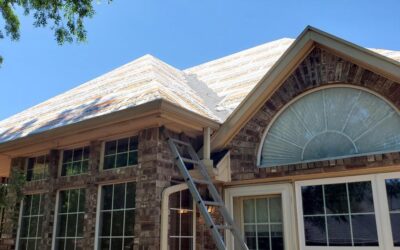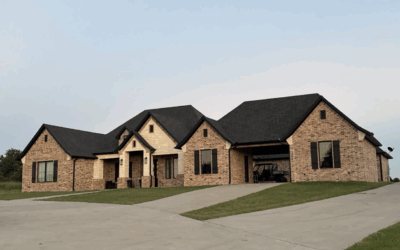Severe storm season for Oklahoma is just around the corner, don’t wait to protect your home and roof! By taking swift action, you can minimize damage, streamline the repair process, and keep your home and family safe. Let’s dive into the essential steps you need to take after a storm.
Step 1: Stay Safe and Assess the Damage
Before stepping outside to inspect the damage, it’s important to ensure your safety. Storms can cause significant hazards like fallen power lines, debris, and unstable structures. Avoid rushing into potentially dangerous situations.
Here’s how to assess storm damage safely:
- Stay Inside Until Safe: Look around your property from inside your home or yard to avoid stepping into hazardous areas.
- Check for Common Damage Areas: Oklahoma storms often cause damage to specific parts of homes, including:
- Roofs: Wind, hail, and debris can tear off shingles, cause dents, or even create leaks.
- Siding and Gutters: High winds can crack or tear off siding, and heavy rain may damage gutters.
- Windows: Hail and flying debris can crack or shatter windows.
- Interior Water Damage: Look for signs of leaks or water damage inside your home.
To safely check your roof, use binoculars to spot any missing shingles or damage, rather than climbing up yourself.
Step 2: Document the Storm Damage for Insurance
After confirming it’s safe to move forward, document the damage for your insurance claim. The more thorough your documentation, the faster and more efficiently your claim will be processed. Here’s how you can properly document the damage:
- Take Clear Photos: Capture images of all visible damage, including your roof, siding, windows, gutters, and any interior damage.
- Record Videos: Videos can help capture the full scope of the damage, especially if you have leaks inside your home.
- Note Key Details: Write down important information such as the date and time of the storm, the areas affected, and any immediate issues you observed (e.g., water damage or missing shingles).
Step 3: Contact Your Homeowners Insurance Provider
Once you’ve documented the damage, it’s time to contact your homeowners insurance provider. Storm damage is typically covered under most policies, but it’s always a good idea to verify the specifics of your coverage. Be ready with the following information:
- Details of the storm: Date and time of the storm, and description of the damage.
- Photos and videos: Submit your visual documentation to support your claim.
Your insurance company will send an adjuster to assess the damage and determine the next steps. After your claim is approved, you’ll be able to move forward with repairs.
Step 4: Call a Professional Roofing Contractor
One of the most important steps in handling storm damage is contacting a professional roofing company that specializes in storm damage repairs. While it might be tempting to handle the repairs yourself, roofing professionals can identify hidden issues and offer a comprehensive repair plan.
Why call a professional roofer?
- Expert Damage Assessment: A professional roofer will conduct a thorough inspection of your roof, siding, gutters, and other areas.
- Free Estimates: Many roofing companies offer free damage assessments and repair estimates.
- Insurance Assistance: A professional roofing contractor can assist you in working with your insurance provider to ensure your claim is processed smoothly.
By choosing a professional roofer, you can ensure that the job is done right the first time and prevent any long-term damage.
Step 5: Make Temporary Fixes to Prevent Further Damage
While waiting for your roofing contractor to arrive, it’s essential to make temporary fixes to minimize further damage. Many roofing companies, including ours, offer 24-hour emergency storm damage repair services, but there may still be a wait.
Here are some quick, temporary fixes you can do to protect your home:
- Tarp the Roof: If you have leaks or missing shingles, cover the affected area with a tarp to prevent additional water damage.
- Board Up Broken Windows: Use plywood or boards to cover broken windows and prevent further water or debris from entering your home.
- Clear Away Debris: Remove fallen branches or other debris near your home that could cause additional damage.
- Catch Leaks: Set up buckets to catch any water leaking from the ceiling to prevent it from damaging furniture, floors, and carpets.
- Move Furniture: Relocate furniture or valuables away from leaking areas to prevent water damage.
Get Help Fast and Protect Your Home
Dealing with storm damage can be stressful, but by following these steps, you can protect your home and get it back to normal as quickly as possible. Stay safe, document the damage, contact your insurance provider, and bring in trusted professionals to handle repairs.
Call Bailey’s Roofing and Construction Today!
If your home has been impacted by hail, wind, or water, don’t wait for the damage to get worse. Bailey’s Roofing and Construction specializes in storm damage repairs, from inspecting your property to providing top-notch solutions that restore your home’s strength and safety.
Our expert team will ensure your home is prepared to face future storms with confidence. Contact Bailey’s Roofing and Construction today for a free inspection and fast, reliable service.



0 Comments